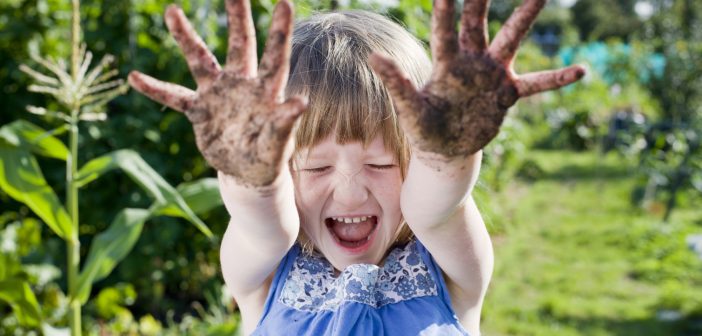Getting your child to eat their fruits and veggies can be frustrating. If you have a picky eater, meal times can quickly turn into a battle if you insist on them taking a few bites of food they don’t like. While you don’t want to turn mealtimes into a struggle, you also want to make sure your children are receiving the proper nutrients.
If you’ve already tried some common tricks and tips to get your child eating, it might be time to try something new. Studies show that children who grow their own food are more likely to eat their fruits and veggies.
Your children can grow their own food all year long with an indoor garden!
How to get started
The first thing you’ll want to do is get your kids involved. Buy them their own child-sized gardening tools and let them help pick out the essentials for your indoor garden.
You’ll want to decide if you’re starting with seeds or transplant existing veggies and fruits. Growing plants from seeds can be a great way to introduce kids to the life cycle of a plant, but they’ll take a while to grow.
Once you have your seeds or plants, you’re going to need pots and planters with drainage holes. Smaller pots are okay for some veggies, but large veggies and fruits are going to need a deep pot so their roots can grow. You’ll also need to pick up some high-quality potting soil.
Once you have all your supplies, you’ll need to pick out a good window. If you’re concerned your plants won’t get enough natural light, consider buying a grow light. Grow lights help supplement natural light so that plants can still receive proper nutrients.
There are websites out there that can help you find the best supplies for indoor gardening. Check out GrowAce to get ideas for some other indoor gardening products.
Best indoor veggies
Certain vegetables are easier to grow indoors than others. If you’re looking for suggestions, try growing one of the following.
Baby kale
Baby kale is a microgreen and is incredibly easy to grow. It typically takes between 2-3 weeks before it’s ready to eat. If your kids are hesitant to eat their greens, they might be willing to sprinkle their newly grown baby kale on top of their sandwiches.
Carrots
Carrots are one of the easiest vegetables to grow, but you’ll need a deep container. Kids will have fun helping to harvest them from the dirt. At their peak size, carrots can make a great treat! Sometimes even the pickiest of eaters will try a carrot if they’re able to dip the carrot into ranch dressing.
Herbs
Almost every herb can be grown indoors, and they’re easy plants to take care of. After the herbs are grown, your child can help pick them and decide how they’re going to be used. Herbs add great seasoning to dishes. Your child will enjoy helping you cook so they can add their freshly grown herbs to the dish!
Best indoor fruits
Just like vegetables, certain fruits are easier to grow indoors. Something to keep in mind is that most fruits grow on trees or bushes, so you’ll need to invest in deep pots.
Cherry tomatoes
Tomatoes are technically a fruit, not a veggie. While full-size tomatoes are easier to grow outdoors, cherry tomatoes are the perfect size to grow inside. They also make great bite-size snacks for kids.
Apricots
Compact varieties of apricots can grow just fine in an indoor pot as long as there is enough light. You will have to remember to hand pollinate the flowers, however, if you want fruit.
Strawberries
This fruit is a favorite of most children. Strawberries grown indoors in a well-lit windowsill will start producing fruit as early as the spring. The fruit will continue to grow throughout the summer and into the fall.
Maintenance
Once you have your indoor garden set up, you’ll need to continue to maintain it. Get your kids involved by buying them their own child-sized watering cans so they can help with the watering.
Kids are naturally curious, so be prepared for questions about the growing process. This is a great time to talk about life cycles, nutrients, photosynthesis, and more. If you’re not sure of an answer, research the question together with your child.
Keeping your child involved in all stages, from starting your garden to maintaining your garden to harvesting your garden, will help them develop a sense of ownership over their veggies and fruit. With any luck, this ownership will make them more eager to eat their own produce.




